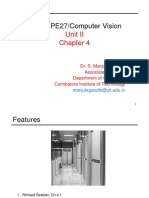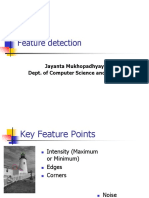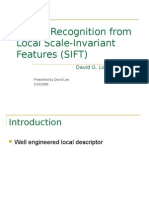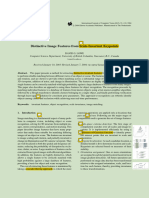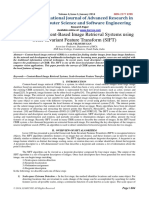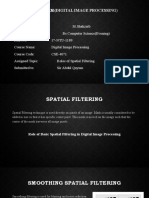0% found this document useful (0 votes)
17 views24 pagesSIFT Algo
The document discusses the Scale Invariant Feature Transform (SIFT) method used in computer vision for detecting and matching features across images. It outlines the characteristics of desirable features, the feature detection and matching pipeline, and how to achieve scale and rotation invariance. Additionally, it describes the application of SIFT in a fingerprint verification system using a specific dataset.
Uploaded by
vaibhavmahant10Copyright
© © All Rights Reserved
We take content rights seriously. If you suspect this is your content, claim it here.
Available Formats
Download as PDF, TXT or read online on Scribd
0% found this document useful (0 votes)
17 views24 pagesSIFT Algo
The document discusses the Scale Invariant Feature Transform (SIFT) method used in computer vision for detecting and matching features across images. It outlines the characteristics of desirable features, the feature detection and matching pipeline, and how to achieve scale and rotation invariance. Additionally, it describes the application of SIFT in a fingerprint verification system using a specific dataset.
Uploaded by
vaibhavmahant10Copyright
© © All Rights Reserved
We take content rights seriously. If you suspect this is your content, claim it here.
Available Formats
Download as PDF, TXT or read online on Scribd
/ 24











